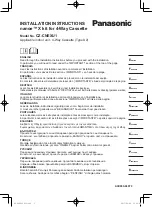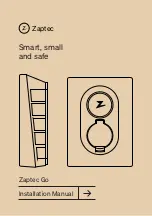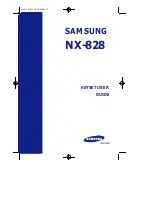
NOTE
The switching mode and the settings can be changed by executing a teach function by
means of a multifunctional input (
see "Multifunctional input (“MF Input”)", page 57
IO-Link (
see "Operation via IO-Link", page 21
NOTE
When changing between the “Switching window” (“Window”) and “Distance to object”
(“DtO (1point)”) switching modes, it is possible that the setting for the previously
selected logic and/or the switching point setting will change.
6.4.1.2.2
Teachable settings (“Teach”)
Two teach methods are available for the switching window (“Window”) switching mode
to set up the switching window in accordance with the application requirements.
Teach function
Description
Q
1
near
You can use the “Q
1
near” teach method to teach in the first of the two
switching points for the switching window (“Window”) switching mode.
Depending on whether the smaller or larger distance value is taught in for
“Q
1
near” (compared to the distance value for “Q
1
far”), the corresponding
switching output acts either as High Active (distance for near < distance for
far;
) or Low Active (distance for near > distance for
far;
).
Q
1
far
You can use the “Q
1
far” teach method to teach in the second of the two
switching points for the switching window (“Window”) switching mode.
Depending on whether the smaller or larger distance value is taught in for
“Q
1
far” (compared to the distance value for “Q
1
near”), the corresponding
switching output acts either as High Active (distance for near < distance for
far;
) or Low Active (distance for near > distance for
far;
).
6.4.1.2.3
Manual settings
Setting
Description
Q
1
near
You can use the “Q
1
near” setting to manually set the first of the two switch‐
ing points of the switching window in millimeters. Depending on whether
the smaller or larger distance value is set for “Q
1
near” compared to the
distance value for “Q
1
far”, the corresponding switching output acts either
as High Active (distance for near < distance for far;
)
or Low Active (distance for near > distance for far;
Q
1
far
You can use the “Q
1
far” setting to set the second of the two switching
points for the switching window (“Window”) switching mode. Depending on
whether the smaller or larger distance value is set for “Q
1
far” (compared to
the distance value for “Q
1
near”), the corresponding switching output acts
either as High Active (distance for near < distance for far;
) or Low Active (distance for near > distance for far;
).
Q
1/2
hysteresis
You can use the “Q
1
hysteresis” setting to manually set the switching hys‐
teresis in millimeters. (More details on hysteresis:
)
Q
1
Logic
You can use the “Q
1
Logic” setting to manually select whether the output is
to act as High Active (
) or Low Active (
). If the logic is modified, the sensor automatically exchanges the
values set for near and far accordingly.
6
OPERATION
28
O P E R A T I N G I N S T R U C T I O N S | DT50-2 Pro
8017154/1AVV/2021-03-24 | SICK
Subject to change without notice
















































